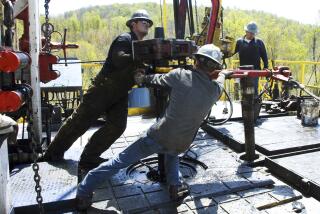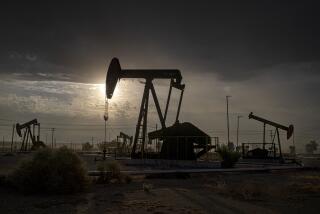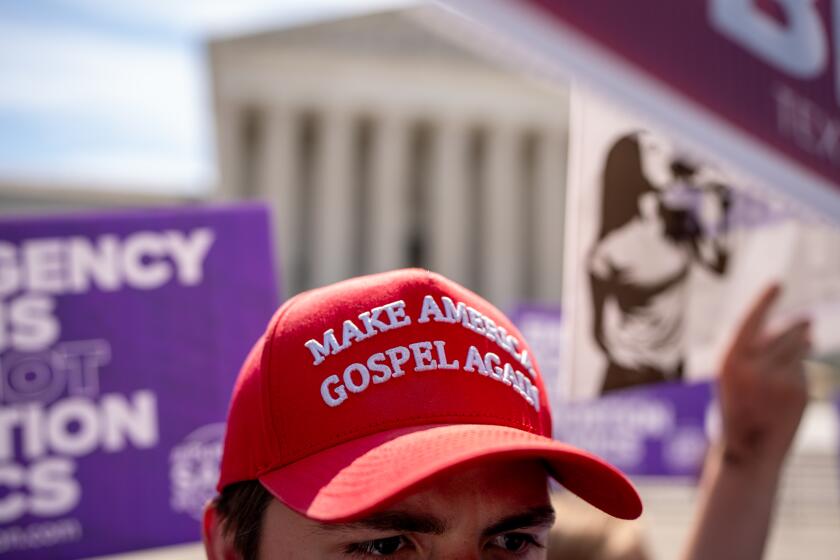Op-Ed: If you bank with the Big 4, your money has an alarming carbon footprint

As the world warms, expect a lot more heat aimed at global banks, in particular at the biggest American ones. That’s because they’ve allowed themselves to become the ultimate and most powerful enablers of the fossil fuel industry — and because, in recent weeks, some of their peers in the rest of the world have begun to move in the right direction.
It’s easy to see that Exxon has been on the wrong side of the climate equation, but you have to dig deeper to see why JP Morgan Chase or Bank of America or Wells Fargo or Citi share a similar responsibility. Basically, it’s because the money in their charge — your money if you’re a customer — is lent to the oil and gas industry, and because these banks, with assets of about $10 trillion, use their underwriting capabilities to issue corporate debt to these companies.
Sustainability and energy-finance scholars in the United Kingdom and Ireland calculate that 90% of new capital for fossil fuel companies derives from debt finance — bank loans and bond issuances.
If you think the links between American banks, oil and Russia’s war-making aren’t deep and profound, think again.
And banks have that money to lend thanks in part to the support of our government — of all of us. All banks rely on the Federal Deposit Insurance Corp., for instance, a guarantee backed by the American taxpayer that their depositors’ money is safe up to $250,000.
But here’s where the carbon math gets interesting. Crunching numbers from a 2021 report calculating bank-financed emissions, it works out that $62,500 in one of the big American banks could produce as much carbon (about 8 tons) as all the heating, driving, flying, cooling and cooking an average American does in six months.
Your bank account — because it is used to expand pipelines, frack wells and the like — could represent the heaviest part of your climate footprint. And of course, it’s not just individuals: American corporations with billions in their corporate coffers deposit and invest those monies in ways that finance emissions and add to their carbon footprint.
When you get right down to it, your mundane local suburban branch of the Big 4 banks might as well have a smokestack on its roof. Yes, they also invest in wind and solar (and boast about it endlessly in their ads). But that doesn’t negate the damage that comes from expanding the size of the fossil fuel empire.
Ojibwe women — water protectors — have been leading a seven-year battle against the Enbridge Inc. tar sands pipeline in Minnesota. Now the president is their ‘only hope’
And this year we’ve seen that the biggest banks, because of their fossil fuel investments, are deeply entwined with Putin’s Russia. According to LINGO, the Leave It In the Ground Initiative, they provide nearly half the capital for the massive Russian oil and gas projects that climate scientists call “carbon bombs,” projects whose revenue pays for the real bombs falling on Kyiv.
Is all this inevitable?
No. Because one of us is the founder of a bank trying to align with society’s most important needs, we know that finance, while seemingly boring and unimportant, is both powerful and dangerous. There are many financial service providers that behave responsibly: local banks, credit unions and the like that are focused close to home, not off in the oil fields of the Siberian Arctic. Money, liquidity, credit — these can be forces for good empowering people to avoid existential peril and to realize important dreams.
But even the banks focused on making money globally could easily get out of the climate destruction business. Environmentalists aren’t asking for much: only that banks stop lending for the expansion of the fossil fuel industry. In December, Europe’s biggest bank — HSBC, with $3 trillion in assets — pledged to do that, announcing it would cease lending for the development of new oil and gas fields, in line with the recommendations of the International Energy Agency and the Intergovernmental Panel on Climate Change. The French banking giant Credit Agricole took similar steps earlier in the year.
If these European banking giants can do it, so can Chase and Citi, Wells Fargo and BofA. Remember, these are the very same banks that enjoy the prerogatives the American people bestow on them by insuring their deposits. And these money center banks — having grown “too big to fail” because they present a risk to the whole banking system if they do — get especially cheap money from the Federal Reserve.
In March, across the country, people will be protesting outside the branches of these behemoths, demanding an end to their support for fossil fuel expansion. As long as banking is supported by tax dollars, that’s the minimum we should ask. If society supports the banks, the banks should be supporting society.
Kat Taylor is the board chair, co-founder and former CEO of Beneficial State Bank. Bill McKibben is the founder of Third Act, an organizer of the March bank protest.
More to Read
A cure for the common opinion
Get thought-provoking perspectives with our weekly newsletter.
You may occasionally receive promotional content from the Los Angeles Times.












